Themed collection Emerging Investigators

Contributors to our Emerging Investigators collection
RSC Medicinal Chemistry profiles the contributors to the ‘Emerging Investigators’ themed collection.

RSC Med. Chem., 2022,13, 1440-1445
https://doi.org/10.1039/D2MD90042D
It's ok to be outnumbered – sub-stoichiometric modulation of homomeric protein complexes
Recent literature examples of small molecules reported to modulate a homomeric protein complex at sub-stoichiometric concentrations were selected to discuss implications on drug discovery efforts.
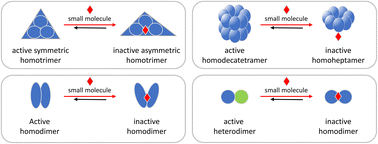
RSC Med. Chem., 2023,14, 22-46
https://doi.org/10.1039/D2MD00212D
Hydroxypyrone derivatives in drug discovery: from chelation therapy to rational design of metalloenzyme inhibitors
Hydroxypyrone derivatives comprise a versatile class of compounds with massive potential as therapeutic and imaging agents. Their excellent metal chelating properties have been exploited to inhibit metalloenzymes.
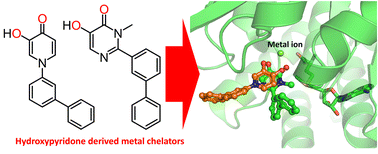
RSC Med. Chem., 2022,13, 1127-1149
https://doi.org/10.1039/D2MD00175F
Medicinal chemistry of the myeloid C-type lectin receptors Mincle, Langerin, and DC-SIGN
This review outlines the current state of research into glycomimetic or drug-like small molecule ligands for the C-type lectin receptors Mincle, Langerin, and DC-SIGN, which have potential applications in vaccine research and anti-infective therapy.

RSC Med. Chem., 2021,12, 1985-2000
https://doi.org/10.1039/D1MD00238D
β-Lactam antibiotic targets and resistance mechanisms: from covalent inhibitors to substrates
Overview of β-lactam antibiotics and the proteins with which they covalently interact, focusing on penicillin-binding proteins and serine β-lactamases.
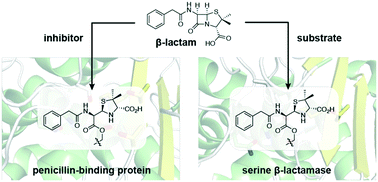
RSC Med. Chem., 2021,12, 1623-1639
https://doi.org/10.1039/D1MD00200G
Uptake mechanisms of cell-internalizing nucleic acid aptamers for applications as pharmacological agents
Selection methods in generating cell-internalizing nucleic acid aptamer via cell-SELEX technique for applications in diagnostics and therapeutics are discussed. Their challenges, optimization strategies and cellular uptake mechanisms are presented.
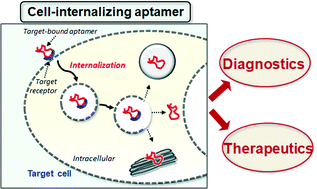
RSC Med. Chem., 2021,12, 1640-1649
https://doi.org/10.1039/D1MD00199J
Macrocyclization strategies for cyclic peptides and peptidomimetics
Macrocyclization between head, tail or sidechains is a frequently employed strategy to enhance peptide and peptidomimetic stability, selectivity and affinity.

RSC Med. Chem., 2021,12, 1325-1351
https://doi.org/10.1039/D1MD00083G
De novo molecular drug design benchmarking
Deep neural networks (DNNs) used for de novo drug design have different architectures and hyperparameters that impact the final output of suggested drug candidates. Herein we review benchmarking platforms that assess the utility and validity of DNNs.
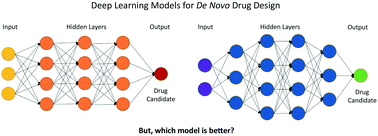
RSC Med. Chem., 2021,12, 1273-1280
https://doi.org/10.1039/D1MD00074H
Targeting the protease of West Nile virus
Protease inhibitors of West Nile virus have long suffered from insufficient drug likeness, which has been tackled in latest advancements.
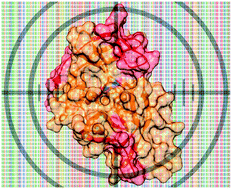
RSC Med. Chem., 2021,12, 1262-1272
https://doi.org/10.1039/D1MD00080B
Human carboxylesterases and fluorescent probes to image their activity in live cells
In this review, drug metabolizing human carboxylesterases and fluorescent probes capable of studying their activity in live cells are discussed.
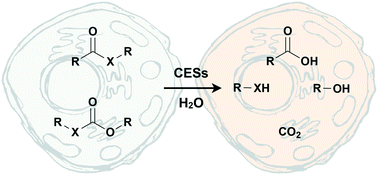
RSC Med. Chem., 2021,12, 1142-1153
https://doi.org/10.1039/D1MD00073J
Cyclisation strategies for stabilising peptides with irregular conformations
There are remarkably few examples of designing cyclic constraints for peptides which adopt an irregular conformation in their bioactive state. We discuss the design strategies, opportunities and challenges for this underexplored class of inhibitors.

RSC Med. Chem., 2021,12, 887-901
https://doi.org/10.1039/D1MD00098E
The right tools for the job: the central role for next generation chemical probes and chemistry-based target deconvolution methods in phenotypic drug discovery
High quality chemical probes and chemistry-based target deconvolution techniques will be crucial to the advancement of phenotypic drug discovery, providing new hope for treatment of diseases with highly complex biology.

RSC Med. Chem., 2021,12, 646-665
https://doi.org/10.1039/D1MD00022E
The tridecaptins: non-ribosomal peptides that selectively target Gram-negative bacteria
Tridecaptins are a re-emerging class of non-ribosomal antibacterial peptides (NRAPs) with potent activity against highly problematic strains of Gram-negative bacteria.

RSC Med. Chem., 2021,12, 538-551
https://doi.org/10.1039/D0MD00413H
Targeting the SARS-CoV-2-spike protein: from antibodies to miniproteins and peptides
Fighting COVID-19 with high affinity reagents: this review article summarizes the discovery of several classes of (bio) molecules targeting the SARS-CoV-2 spike protein.
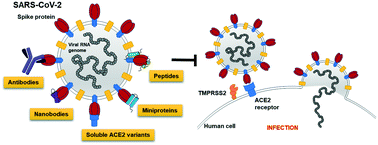
RSC Med. Chem., 2021,12, 197-202
https://doi.org/10.1039/D0MD00385A
Interrogation of the Pathogen Box reveals small molecule ligands against the mycobacterial trehalose transporter LpqY-SugABC
Interrogation of the Pathogen Box identified diverse chemical scaffolds against the mycobacterial trehalose transporter.
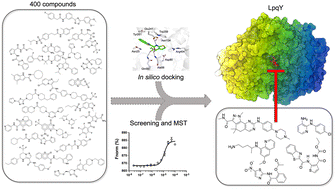
RSC Med. Chem., 2022,13, 1225-1233
https://doi.org/10.1039/D2MD00104G
Oleic amide derivatives as small molecule stimulators of the human proteasome's core particle
A series of oleic acid amide derivatives were generated as potential small molecule stimulators of the 20S core particle of the proteasome (20S CP), with the goal of increasing the protein degradation rate via the ubiquitin-independent pathway.
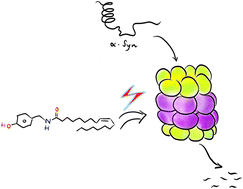
RSC Med. Chem., 2022,13, 1077-1081
https://doi.org/10.1039/D2MD00133K
Identification of ligand linkage vectors for the development of p300/CBP degraders
To develop new degrader molecules from an existing protein ligand a linkage vector must be identified and then joined with a suitable E3 ligase without disrupting binding to the respective targets.
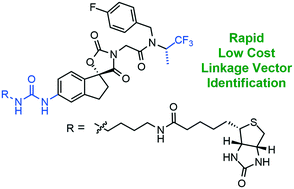
RSC Med. Chem., 2022,13, 726-730
https://doi.org/10.1039/D1MD00070E
Structure–activity relationships of valine, tert-leucine, and phenylalanine amino acid-derived synthetic cannabinoid receptor agonists related to ADB-BUTINACA, APP-BUTINACA, and ADB-P7AICA
Synthetic cannabinoid receptor agonists (SCRAs) remain one the most prevalent classes of new psychoactive substances (NPS) worldwide, and examples are generally poorly characterised at the time of first detection.
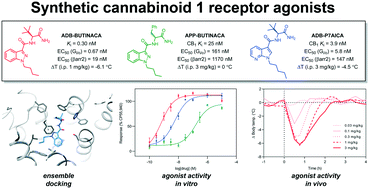
RSC Med. Chem., 2022,13, 156-174
https://doi.org/10.1039/D1MD00242B
Photochemical synthesis of an epigenetic focused tetrahydroquinoline library
This work describes the photochemical synthesis of a tetrahydroquinoline library enriched with chemotypes privileged for epigenetic targets and exploring new regions of chemical space.
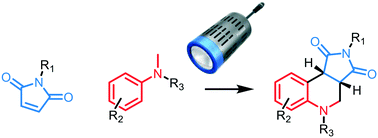
RSC Med. Chem., 2021,12, 1780-1786
https://doi.org/10.1039/D1MD00193K
Analysis of physicochemical properties of protein–protein interaction modulators suggests stronger alignment with the “rule of five”
The physicochemical properties of protein–protein interaction (PPI) modulators vary between those on the market, those in clinical trials, and those in the early drug discovery pipeline.

RSC Med. Chem., 2021,12, 1731-1749
https://doi.org/10.1039/D1MD00213A
Replacement of oxygen with sulfur on the furanose ring of cyclic dinucleotides enhances the immunostimulatory effect via STING activation
Cyclic dinucleotide analogues that have sulfur atoms on the furanose rings act as potent and stable STING agonists.
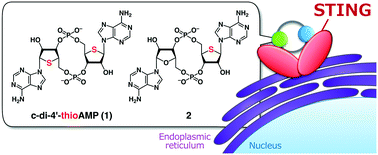
RSC Med. Chem., 2021,12, 1519-1524
https://doi.org/10.1039/D1MD00114K
Synthesis and evaluation of pyridine-derived bedaquiline analogues containing modifications at the A-ring subunit
Unique synthetic strategies were developed access to new bedaquiline analogues, leading to the discovery that anti-tubercular activity could be retained following replacement of bedaquiline's quinoline A-ring subunit with pyridine heterocycles.
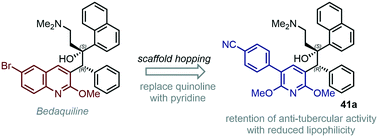
RSC Med. Chem., 2021,12, 943-959
https://doi.org/10.1039/D1MD00063B
Drugging the undruggable: a computational chemist's view of KRASG12C
Starting from a literature KRASG12C inhibitor, in this article we show how computational chemistry can help guide the process to a highly optimised tetracyclic series which demonstrates strong tumour regression.
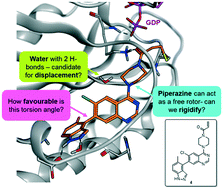
RSC Med. Chem., 2021,12, 609-614
https://doi.org/10.1039/D1MD00055A
Potent and selective A3 adenosine receptor antagonists bearing aminoesters as heterobifunctional moieties
Potent A3 adenosine receptor antagonists were developed to be conjugated and obtain receptor probes, drug delivery systems, and multitarget or bitopic ligands.
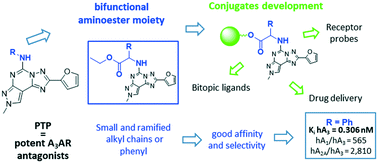
RSC Med. Chem., 2021,12, 254-262
https://doi.org/10.1039/D0MD00380H
Systematic analysis of the interactions driving small molecule–RNA recognition
This study underscores privileged interactions for RNA binding small molecules, an emerging focus in drug discovery.
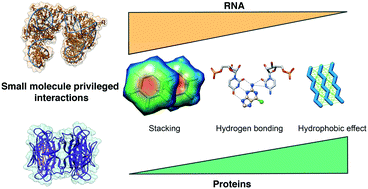
RSC Med. Chem., 2020,11, 802-813
https://doi.org/10.1039/D0MD00167H
About this collection
This themed collection brings together recent research and reviews by some early career researchers in the medicinal chemistry community, highlighting the achievements of these rising stars in the field.
New articles will be added to the collection upon publication. Please return to this page frequently to see the collection grow